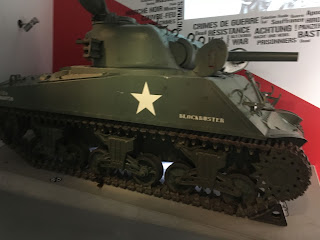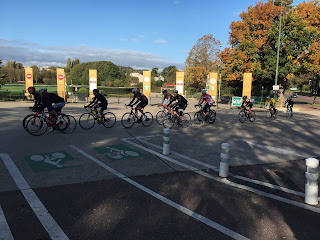Rav Mike Feuer, host of The Jewish Story
on The Land of Israel Network
This morning I walked to the
Power Coffeeworks on Agripas St. in Jerusalem to meet Rav Mike Feuer, host of
The Jewish Story a podcast on
The Land of Israel Network. I have been listening to the podcast since 2017, alternately listening the current episodes, now in the 1950s, and the episodes from the beginnings of the Jewish people.
In person, Mike looks just like his photo, upbeat and energetic and bubbling with what he is doing and learning and thinking. Mike was born and raised in Cleveland. He moved to Israel 18 years ago after graduate studies. He teaches at the
Pardes Institute of Jewish Studies in Jerusalem. He is also an organization consultant and makes dinner for his family every day--it's in his schedule. He and his wife have five kids between five and fifteen years old.
We talked about bad knees and running and family and the state of Israel and America. We also talked about learning in the Jewish community, the limits of reason, and the how stories really define who we are.
The Jewish Story helped me to see the panorama of Jewish life over more than three millennia.
At my Reform Synagogue in Lancaster, I study Torah with Rabbi Paskoff. He is very committed to the Diaspora Jewish experience. From Mike I hear the story from a man who left America for Israel and is raising a big family (by American standards) in a land that is a terrorist target. Though White Nationalism in America is making Anti-Semitism worse every day.
We also talked about the political divide in Israel. At one point the owner of the coffee shop interrupted, pulling a book of a shelf near us then running upstairs to get two more. He proudly said he had books from Rabbis with widely different opinions in his coffee shop. He came to Israel from South Africa. When I first arrived and ordered coffee I could hear his outpost-of-the-former-empire accent, but could not tell whether it was South Africa or Australia.
Mike told me about a new book series he is writing on with co-author Dave Mason. They just published the second book in the
Age of Prophecy series. I got the first already on Kindle unlimited. It's called
Lamp of Darkness. It is a series to bring the world of the Biblical Prophets to life for modern readers. Mike grew up on science fiction and, in a way, ancient history is a galaxy far, far away.
After two hours we were still talking excitedly about life, the universe and everything, but I had to get to the bike shop and pick up my ride. What a wonderful morning.






































